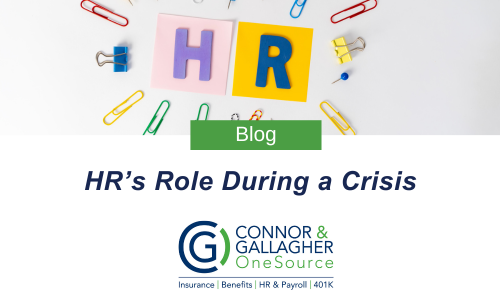The Human Resources (HR) function is essential in crisis management, serving as both a strategic partner and an advocate for employees. HR's role extends beyond administrative tasks to maintaining stability, communication, and morale during challenging times.
- Preparedness and Planning
Before a crisis strikes, HR contributes to organizational resilience by:
- Developing Crisis Management Policies: Establishing protocols for employee safety, communication channels, remote work, and emergency leave.
- Training and Simulations: Equipping managers and employees with the knowledge to respond effectively to emergencies like cyberattacks, natural disasters, or safety and security threats.
- Workforce Risk Assessment: Identifying vulnerable roles and critical skills necessary for business continuity.
Example: HR creates contingency staffing plans and updates contact lists for rapid response.
- Communication During Crisis
Clear and compassionate communication is vital:
- Central Information Channel: HR coordinates updates from leadership to employees, ensuring accuracy and consistency.
- Transparent Messaging: Regular, empathetic updates help prevent misinformation and panic.
- Two-Way Communication: HR collects employee feedback and concerns to guide leadership decisions.
Example: During 9/11, HR teams managed company-wide communications regarding safety measures, remote work policies, and mental health resources.
- Employee Well-being and Support
Crises induce significant stress on employees:
- Emotional and Psychological Support: HR facilitates access to counseling, Employee Assistance Programs (EAPs), and wellness initiatives.
- Flexibility: Adjusting work hours, leave policies, and expectations to alleviate pressure.
- Recognition and Empathy: Maintaining morale through appreciation and acknowledgment.
Example: During an unexpected economic downturn that led to budget cuts and job uncertainty, HR managed communications and solutions in order to address employees’ concerns and stress.
- Business Continuity and Workforce Management
HR ensures the right personnel and structures are in place:
- Redeployment: Shifting staff to essential areas or cross-training employees for critical functions.
- Remote Work Infrastructure: Managing logistics, technology access, and productivity expectations.
- Legal Compliance: Navigating labor laws related to layoffs, furloughs, and workplace safety regulations.
Example: After a hurricane disrupted regional operations and damaged several office facilities, HR acted quickly to ensure that the right personnel and structures were in place to maintain business continuity and employee safety.
- Post-Crisis Recovery and Assessment
After a crisis, HR leads the human aspects of rebuilding:
- Reintegration: Assisting employees in returning to normal routines or modified workplaces.
- Review and Improvement: Conducting after-action reviews to refine crisis plans.
- Culture Rebuilding: Addressing challenges related to fear, engagement, and retention that may have arisen.
Example: Following a major cybersecurity breach that temporarily disrupted operations, the HR department, collaborating with their IT partners, took a proactive role in guiding the organization through recovery and rebuilding trust.
- Strategic Leadership Role
HR is proactive and strategic:
- Advising on People-Centered Crisis Decisions: Ensuring that responses align with organizational values.
- Aligning Crisis Responses with Culture: Helping to maintain the organization’s core principles during challenging times.
- Providing Leadership for the Future: Guiding the organization as it looks beyond the crisis.
Example: When the company announced a merger with a larger organization, HR took a proactive and strategic role in guiding people-centered decisions and ensuring that the transition supported both business goals and employee well-being.
In conclusion, proactive preparation for potential crises affords organizations the greatest likelihood of successful recovery while effectively mitigating risk. It is essential that business plans incorporate a comprehensive and well-structured business continuity and disaster recovery strategy, subject to periodic review to ensure continued relevance and resilience in the face of evolving business environments. Should you require professional assistance in these HR-related domains, our team stands ready to provide expert guidance and support.

The views expressed by the authors on this website do not necessarily reflect the views of the website owners, operators, or any affiliated organizations. This blog is for educational and/or informational purposes only and does not constitute tax, financial, or legal advice.
While we’ve done our best to provide accurate and current information at the time of writing this blog, the information within this article is not guaranteed to be complete, correct, timely, current or up-to-date. Similar to any printed materials, the information may become out-of-date. The Authors undertakes no obligation to update any Information on the Site; provided, however, that the Authors may update the Information at any time without notice in the Authors’ sole and absolute discretion. The Authors reserve the right to make alterations or deletions to the Information at any time without notice.






